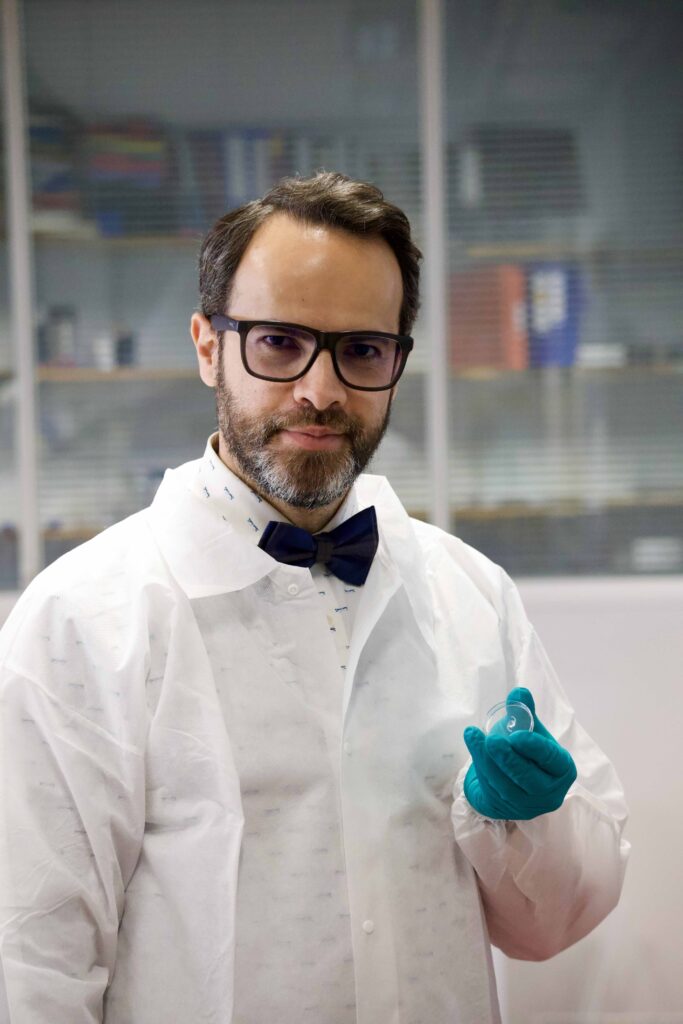On May 20, researchers at the University of East Anglia (UEA) in Norwich, United Kingdom, introduced a groundbreaking resin for 3D printing intraocular devices.
Their proof-of-concept study, published in Current Eye Research, found that 3D-printed intraocular lenses (IOLs) made from this new resin offered good optical clarity and could be folded and implanted into a human capsular bag.1
We caught up with Dr. Aram Saeed, an associate professor in Healthcare Technologies at UEA’s School of Pharmacy and the lead author of the study. Dr. Saeed shared insights into the decade-long journey that led to this breakthrough.

From concept to reality
Dr. Saeed and his team set out to engineer a material that meets stringent International Organization for Standardization (ISO) requirements and performs on par with commercially available IOLs.
“We had to ensure that the resin not only matched the optical clarity, transparency, and biocompatibility of existing lenses but also engineer the material in such a way that can be light cured, with qualities that are required from a type 2 medical device,” he explained.
Achieving this took nearly ten years of intensive material design and numerous iterations, and the development process was not without obstacles.
Dr. Saeed recounted the difficulties, “From selection of the polymers, engineering the structure of the polymers, the composition, and all the variables and parameters related to how this material interacts with light. This is the really challenging part.”
The inspiration behind this endeavor stemmed from the lack of significant material innovations since the 1950s. “The last major innovation in material design for IOLs was in the 1950s with Harold Ridley’s use of plastic materials,” noted Dr. Saeed. “Since then, despite advances in imaging and biometric measurements, material design hasn’t progressed much. We wanted to demonstrate that we can engineer new material that has never been used in ophthalmology.”
The team’s efforts have already garnered recognition, with a patent granted in the United States.
Why 3D printing?
The adoption of 3D printing technology for manufacturing IOLs offers numerous benefits over traditional methods like lathing and molding.
“The primary advantage of 3D printing is the ability to personalize and customize lenses to match the biometric specifications of individual patients,” Dr. Saeed emphasized. This customization could lead to better vision correction and fewer complications post-surgery.
3D printing also allows for rapid prototyping and production, enabling faster iterations and reducing the time from diagnosis to surgery. Dr. Saeed highlighted the potential of 3D printing to democratize access to premium eye care, especially in underserved areas.
“This portable technology can be used in underserved communities, making it more accessible and more affordable for patients to have premium lenses,” he explained.
Next steps
Looking ahead, the UEA team is focused on de-risking the technology and ensuring it meets all ISO standards for safety and efficacy. This involves rigorous preclinical and clinical testing to validate the resin’s performance and long-term stability.
“The next step is for us to go through preclinical testing. The key factors, given this is a lifelong implant, are safety and optical performance,” said Dr. Saeed. “We have to ensure that it provides the highest safety for different eye conditions and different patient groups.”
Collaboration with industry partners will also be crucial in advancing this technology. “We are teaming up with national and international companies to improve 3D printing hardware and to develop our business model,” Dr. Saeed noted.
These partnerships will help expedite the development process and bring the technology to market.
The introduction of a novel resin for 3D printing intraocular devices represents a significant leap forward in ophthalmic technology. With the potential to enhance customization, reduce production times, and improve patient outcomes, this innovation could transform eye care globally.
As Dr. Saeed aptly put it, “We are not just looking at a technological evolution but a vision evolution, aiming to match the uniqueness of each eye with unprecedented precision and personalization.”
Reference
- Hidalgo-Alvarez V, Falcon ND, Eldred J, Wormstone M, Saeed A. Stereolithographic Rapid Prototyping of Clear, Foldable, Non-Refractive Intraocular Lens Designs: A Proof-of-Concept Study. Curr Eye Res. 2024:1-10.



